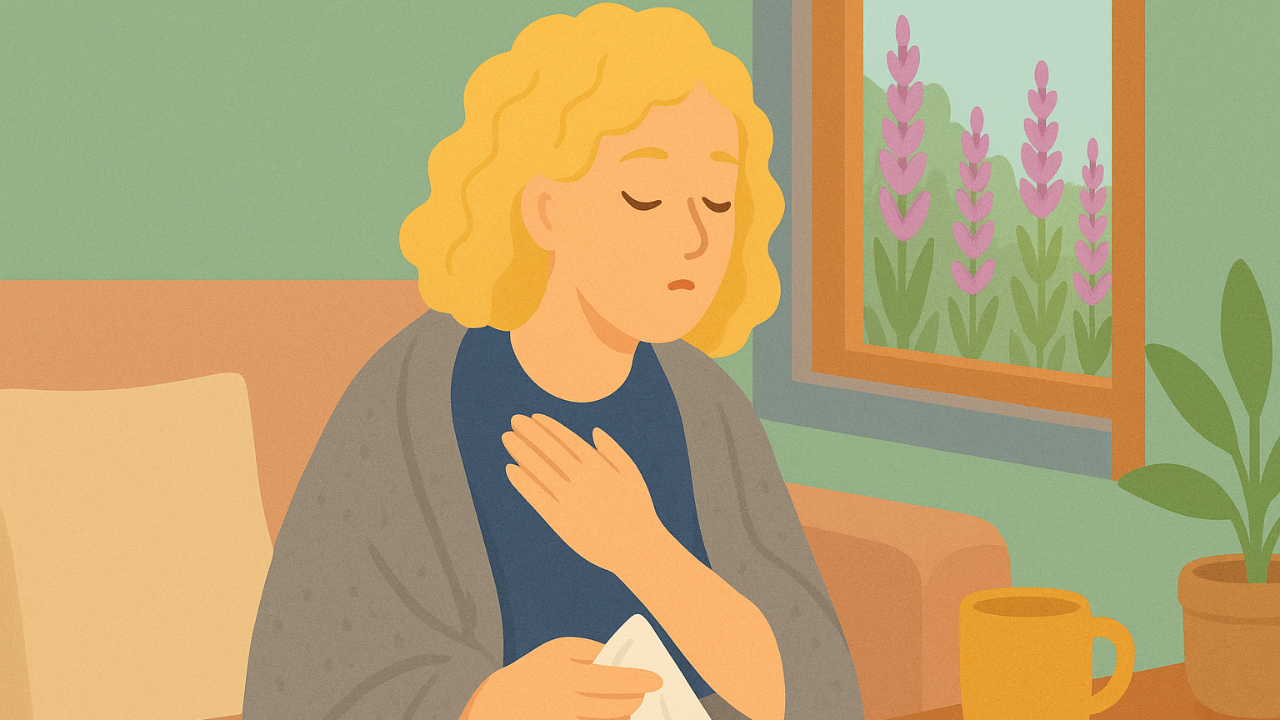
Gentle Nervous System Tools For Grief Waves
Grief can feel tidal. You might be okay enough to fold laundry, then suddenly your breath shortens, your chest aches, or your body drops into heaviness. These waves often come without warning, especially when your system has been in a long season of stress.
If that’s where you are, I’m glad you’re here. Nothing about your reactions is “too much.” Your body is trying to carry what feels uncarriable.
If you want to understand what state your nervous system is getting stuck in, start with the Stress Loop Quiz.
Featured Answer
Grief waves are natural surges of emotional activation. They can bring tightness, numbness, anxiety, or heaviness. Small nervous system tools like orienting, grounding touch, gentle breath, and paced sensory input can help you ride each wave with less fear. These tools do not remove grief. They help your body feel steadier while you move through it.
Why Grief Feels Like Waves
Grief often pulls the body into strong activation, then into collapse. It’s common to feel shaky, overwhelmed, or “on edge for no reason.” Many people recognize this experience in what is shared here about living in a high-alert state.
Then, without warning, the system can swing into shutdown or numbness. Grief itself is not unstable. The nervous system is trying to find its footing while carrying loss.
When a memory, sound, season, or moment brushes against what you lost, your body reacts faster than your thinking mind. This is deeply human.
Tools To Support Grief Waves
1. Anchoring Touch When Your Chest Tightens
Place one hand on your chest.
Place the other on your belly or your side ribs.
Let your shoulders soften as you exhale slowly.
If your grief wave comes with panic-like sensations, you may feel supported by this gentle guide for grounding your body without forcing breath work.
2. Orienting Your Eyes When You Feel Pulled Under
During grief spikes, your awareness might collapse inward. Your thoughts may blur, or your body may feel far away.
Try this:
Slowly turn your head. Let your eyes land on three real things around you.
A color.
A shape.
A soft texture.
This is also a trauma-informed practice, explored in more depth in this article.
3. A Gentle Exhale For When Crying Won’t Come
Some waves feel stuck. You might feel pressure in your throat or a sense that your body wants to cry but can’t.
Try a soft “window fogging” exhale.
Breathe in through your nose.
Exhale through your mouth as if warming your hands.
No forcing. Just softening.
If you’ve ever felt anxious when trying deep breathing, you’re not alone. You might connect with this explanation.
4. Small Movements To Loosen The Weight
Grief can make the body feel heavy.
A small movement may help you feel present again:
• Roll your shoulders.
• Press your feet into the floor.
• Stretch your hands and release them.
Gentle movement can shift your system, similar to the practices shared in this resilience-building guide.
5. A Micro-Script For Overwhelm
You can say this softly:
“I don’t need to fix this wave. I can stay with myself through it.”
Grief waves often soften when the body feels accompanied rather than managed.
A 14-Day Gentle Plan For Grief Waves
Days 1–3: One soft exhale practice each day, under two minutes.
Days 4–6: Add anchoring touch whenever a wave rises.
Days 7–9: Practice orienting three times per day, even on calmer days.
Days 10–12: Add one grounding movement daily.
Days 13–14: Combine two tools when needed.
Example: orienting + soft exhale.
If grief is mixing with numbness or physical pain, you may find this explanation reassuring.
Common Sticking Points
“These tools don’t fix anything.”
They aren’t meant to fix grief. They create steadiness inside it.
“I feel nothing.”
Numbness is a protection response. Start with small sensory cues like naming textures or touching your fingertips together.
“I start crying harder when I try to breathe.”
That’s okay. Crying is part of the wave completing. Shorten the breath practice until it feels tolerable.
“I feel guilty for needing help.”
Loss is heavy. Support is human.
And if you're curious which nervous system pattern is showing up in your body most right now, take the Stress Loop Quiz.
FAQs
1. Why do grief waves feel random?
Because the nervous system reacts to subtle cues long before the mind notices them.
2. Can these tools make grief go away?
No. They help your body stay steady enough to move through the wave without fear.
3. What if I feel numb instead of sad?
Many people shift into freeze during loss. Small orientation practices can help thaw that gently.
4. Why does grief feel like anxiety sometimes?
They share similar activation pathways. This article may help you understand the sensations better.
5. Is therapy important?
If your waves feel unmanageable or you want companionship through the process, consider speaking with a professional.
6. Why do some waves hit harder at night or in quiet moments?
The nervous system feels more of what’s inside when the external world slows down.
More Gentle Reads
These may feel nourishing right now:
- How to Widen Your Window of Tolerance Daily
- Butterflies In Your Stomach: Trauma Or Anxiety?
- A 10-Minute Nervous System Reset For Overwhelm You Can Do Anywhere
Disclaimer: This article is educational and not medical advice. If you have health concerns, consider speaking with a qualified professional.
Discover Your Vagal Tone
Find out how dysregulated your nervous system is and get your personalized roadmap to feeling calm, energized, and in control


